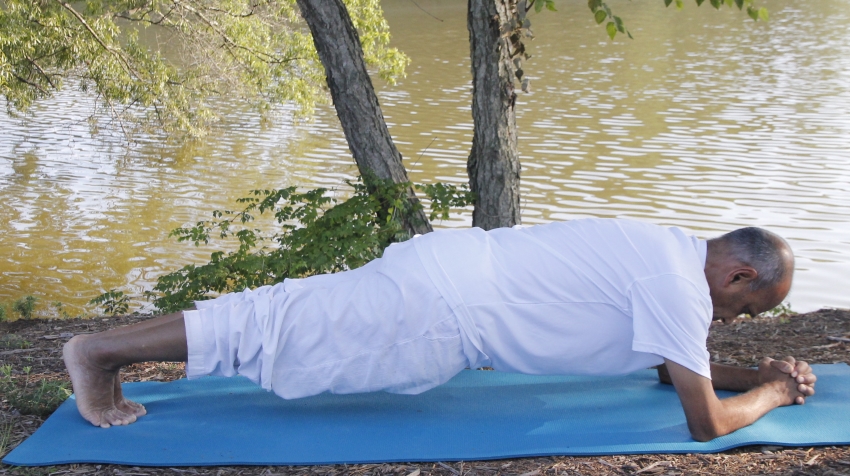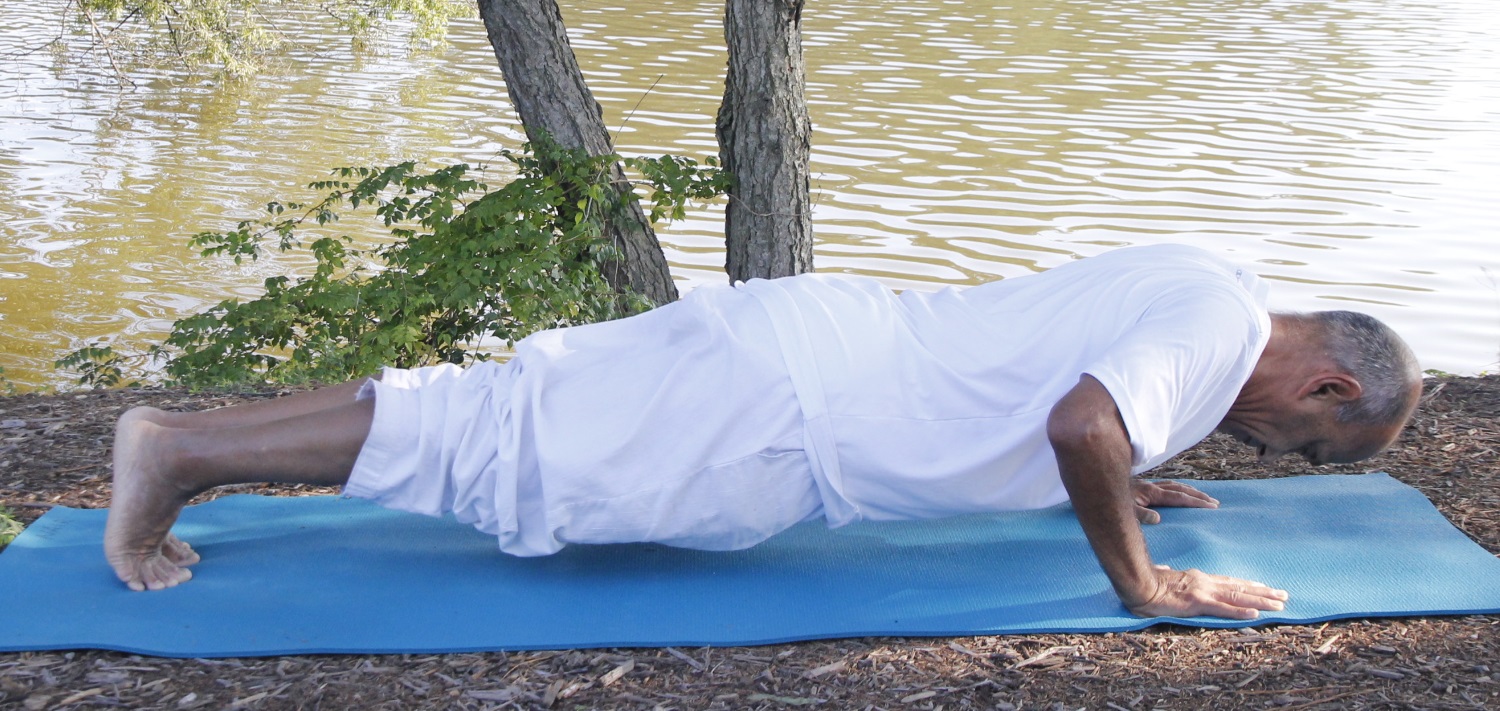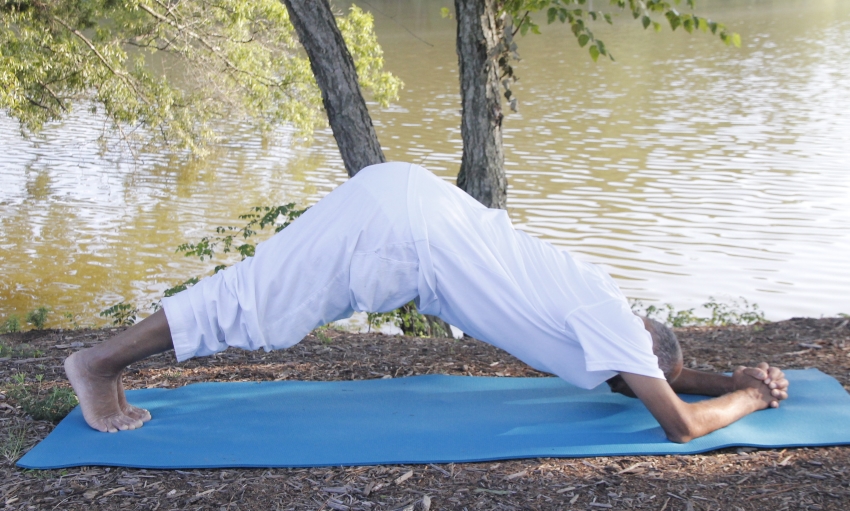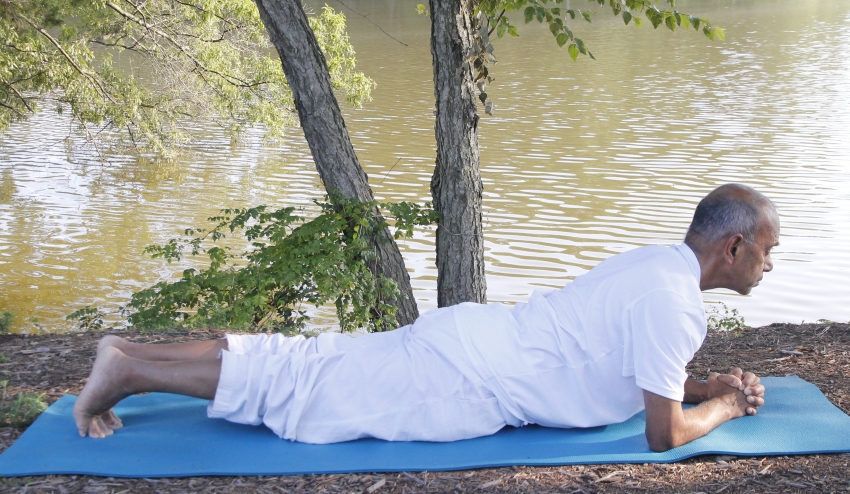
Dolphin Plank
One of the commonly practiced asanas for building strength in the arms and shoulders and also for a strong core is the Chaturanga Dandasana (four-limbed staff pose). This pose is commonly integrated as part of the Surya Namaskar sequence; however, it can also be done independently in association with its close cousin, the plank pose. Chaturanga Dandasana can be a challenging pose for those with weak wrists, arms or shoulders. A variation, called the Dolphin plank pose, is more readily accessible to most students. Even though it is relatively easier to practice it provides all the same benefits as the plank or the chaturanga dandasana, especially because one can hold the pose for a longer duration. This is a great option for those who have weakness in wrists due to sporting activities or repetitious mouse movements in front of the computer.

Chaturanga Dandasana (Four-limbed staff)
Step-by-step
- Start out in the hands and knees position with the hands directly under the shoulders and knees under the hips.
- Slowly begin to bend the elbows and position them directly under the shoulders. Release the abdomen and thighs to the ground.
- You can either keep the forearms parallel to each other or interlock the fingers in front, whichever seems to be more comfortable for you.
- Curl the toes under and begin to lift the knees, thighs, and the abdomen off the floor. Adjust the position so the body is parallel to the floor. Keep the heels pushed backwards and thighs lifted upwards, making sure that the buttocks are not sticking up in the air. Try to keep the head, neck and the spine in alignment.
- Hold the final position for a duration that feels comfortable. With regular practice you will develop the ability to hold the pose for longer periods, maybe even up to a couple of minutes. The key is to keep the duration and the stretch that you feel at a level that does not cause pain of any kind.
- To come out of the pose, slowly release the knees, thighs and the abdomen down and rest in the relaxing position.
Cat and cow variation

Dolphin Down Dog
This is an excellent dynamic variation which gives even deeper benefits for the core, arms and shoulders and the spine.
- From the hands and knees position, come into the dolphin plan pose, as given above.
- With the next inhalation, slide the shoulders forward while at the same time lowering the buttocks and lifting chest and head up.
- While exhaling, roll the shoulders as far back as they go, lifting the buttocks up and keeping the heels pushed backward.
- Continue these dynamic movements with each inhalation and exhalation for as many breaths as feels comfortable.
- Finally, come back to the dolphin plank pose for a couple of more breaths and then release the body down and relax.

Dolphin Up Dog
Benefits
- Calms the mind, the nervous system and helps relieve stress and mild depression
- Practicing the pose for a long period will build stamina, endurance, and a sharper focus
- Builds strength through resistance of your body’s weight, which helps to increase bone density.
- Strengthens the arms, legs, lower back and core
- Helps to improve posture
- Stretches the shoulders, hamstrings, calves, and feet
- Helps prevent osteoporosis
Contraindications
Avoid the pose if you have a recent or current wrist, shoulder, back, arm, or neck injury or pain
[…] plank pose –. […]